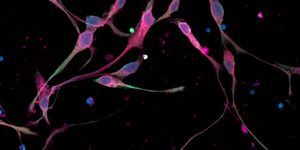The unlikely pain killer
Pain can be anything a sunburn, a toothache, or a leg injury to name a few. The relievers that target our pain come in many colors—one being morphine, a widely used opioid.
Learn more about the biology of pain:
Now, a graduate student at West Virginia University, Shane Kaski, is studying how an anti-itch medication can be effective at relieving pain. Specifically, Kaski is examining how the drug ‘nalfurafine’ targets a certain region of our nerve cells that can make morphine more effective. The research could potentially fight against opioid addiction by making patients less reliant on morphine. Essentially, nalfurafine could serve as a ‘supplement’.
"Right now there's a lot of work looking for replacements for opioids, for obvious reasons," said Kaski, a graduate student in the School of Medicine's M.D./Ph.D. program. "Maybe nalfurafine is not so great as a replacement on its own, but maybe it does enough that we could put it together with other opioids and get this dose-sparing effect."
Using a supplemental dose of nalfurafine along with a decreased dose of morphine was found to reduce as much pain as a large dose of morphine alone. The findings of the study were published in the Journal of Pharmacology and Experimental Therapeutics.
"It's possible that you just need a tiny smidgen of nalfurafine with a smidgen of this other addictive drug to get the equivalent pain relief from a larger dose of your addictive drug," he said. "That's what we're seeing in our early work. That's the promise that we saw."
However, there is a paradox—because to fight the opioid addiction, we use another opioid. Nalfurafine, like morphine, is an opioid. But, how exactly is that supposed to work? The answer to that is through pain receptors.
“Why are you going to use another opioid on top of morphine? It comes down to the specifics of the biology of opioid receptors,” says Kaski. "The biggest three opioid receptors you'll hear about are mu, kappa and delta.”
“Nalfurafine is unusual. Even though it's an opioid, it doesn't have a permit to park in mu. Instead it parks in the kappa receptor. Once it does, it alleviates pain while also "putting the brakes on" the reward circuit that can lead to addiction,” Kaski adds.
Source: West Virginia University










